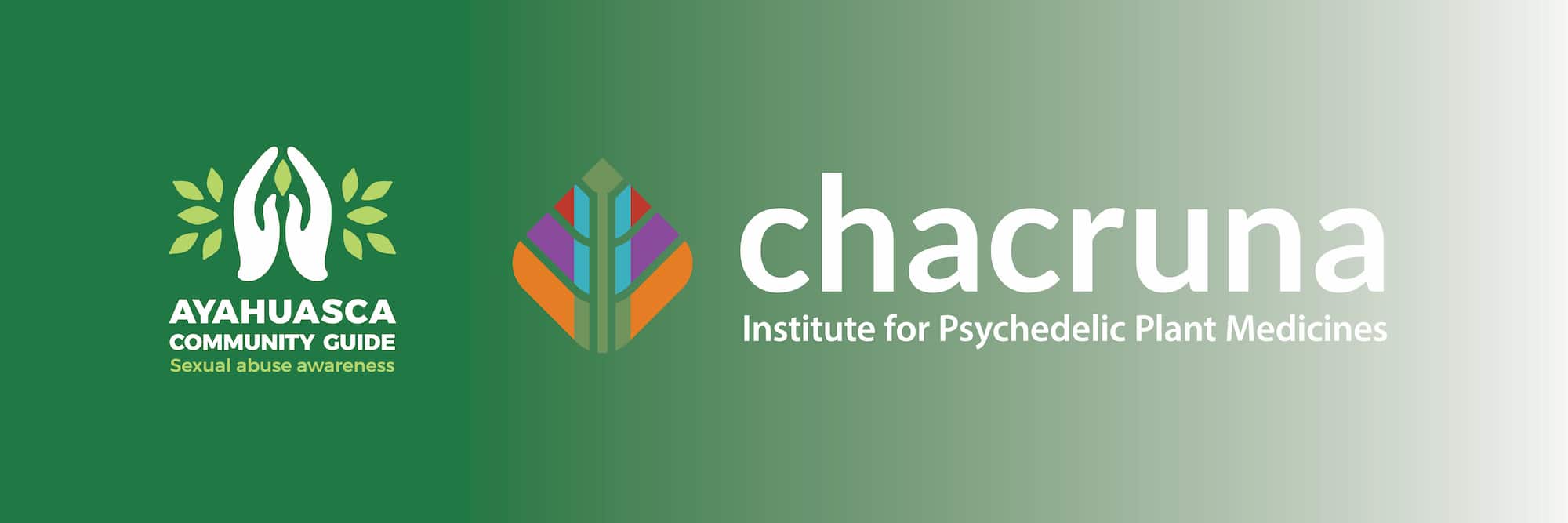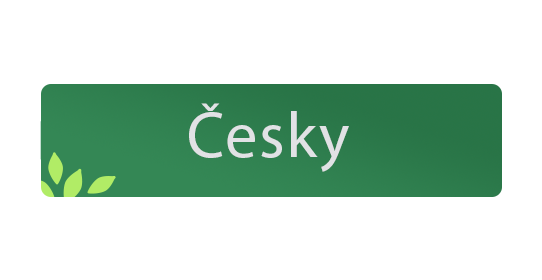
Abuse is never your fault. If anything happens, speak up, reach out!
Sexual abuse and misconduct towards female participants in ayahuasca circles are, unfortunately, quite prevalent. Exact numbers are difficult to obtain, as most cases never come to light; nonetheless, the issue is common knowledge within the ayahuasca community. As an organization dedicated to providing public education and cultural understanding about plant medicines, we at the Chacruna Institute for Psychedelic Plant Medicines do not wish to dissuade women from drinking ayahuasca, but rather to raise awareness about sexual harassment, and offer practical guidelines in the interest of keeping female participants in ayahuasca ceremonies and communities safe. While our guide is aimed toward preventing female participant abuse by male shamans, where the most commonplace abuses have occurred, we also acknowledge that abuse happens by and toward other genders. This guide embraces a culturally-sensitive approach toward raising awareness and the avoidance of abuse in typical scenarios without diminishing the fact that abuse is unlawful and unacceptable in all circumstances.
Why Does Sexual Assault Occur in Ayahuasca Healing Contexts?
Sexual assault in ayahuasca settings involves a wide spectrum of abuse that can occur between healer and patient, including invasive touching, “consensual” sex between healer and participant, and rape.
Sexual assault in ayahuasca settings involves a wide spectrum of abuse that can occur between healer and patient, including invasive touching, “consensual” sex between healer and participant, and rape. The abuse of participants by healers and facilitators in ayahuasca ceremonial contexts, like any sexual assault, is an abuse of power. It is a perversion of the healer-participant dynamic, in which the healer or facilitator uses their position of power and responsibility to gratify personal sexual and/or power interests. This is especially harmful and shocking considering many women who drink ayahuasca are seeking healing for sexual traumas suffered in the past. Sexual relations between healer and patient or religious leader and follower are a violation of healer-patient and religious codes of conduct. The globalization of ayahuasca presents complex cross-cultural interactions where local and global moral codes and gender relational norms often come into contact and conflict, further complicating healer-patient and religious leader-follower relations. Many Western people now partake of ayahuasca ceremonies in South American contexts where mutual misconceptions of the “other” are commonplace. For instance, “shamans” are often highly romanticized in the Western imagination. Some South American, and indeed Western, men have learned to take advantage of exalted images of healers. Equally unjustly, local men may view Western women as sexually promiscuous. Economic inequalities and incentives further complicate these cross-cultural interactions whereby local healers may attempt to improve their financial prospects and social standing through entering into relations with Western women. This is especially prevalent in the current context of the commercialization of ayahuasca. Yet, these cross-cultural considerations cannot fully explain sexual abuse in ayahuasca contexts, since South American women are also sexually abused by South American healers, and Western women by Western healers.
The globalization of ayahuasca presents complex cross-cultural interactions where local and global moral codes and gender relational norms often come into contact and conflict, further complicating healer-patient and religious leader-follower relations.
Sexual abuse between healer and patient is evident in spiritual and healing communities across cultures and throughout time. As in these wider contexts, many shamans or religious leaders claim to possess special powers that can heal others; some might promote “tantric” exercises and sexual contact that they claim can heal someone from past traumatic experiences. They may argue that this will be a way to “regain the sacred energy of sex,” and that “society is moralistic and does not understand the freedom of sex,” etc., in order to gain sexual favors. Instances of so-called “consensual” sex between healer and patient and religious leader and follower often involve great power imbalances and intentional deception and manipulation on the part of the healer. The establishment of allegedly consensual relationships poses several challenges.
Instances of so-called “consensual” sex between healer and patient and religious leader and follower often involve great power imbalances and intentional deception and manipulation on the part of the healer.
Chacruna recognizes that there are many healers, religious leaders, and facilitators working with ayahuasca with great integrity. Being aware of potentially relevant contexts in which misconduct has taken place allows us to make informed choices. All individuals have their own bodily autonomy and the right to make their own choices. All individuals have the right to say “no” to any situation they are not comfortable with, and the right to withdraw themselves from any situation that they are not comfortable in. Here, we offer for your consideration guidelines relevant to typical contexts of abuse.
Being aware of potentially relevant contexts in which misconduct has taken place allows us to make informed choices.
These guidelines were created through collaboration with women and men in the ayahuasca community across different cultural contexts, including indigenous as well as Western victims and survivors of abuse, and ayahuasca healers and ceremonial facilitators. Researchers and regional experts have also been consulted. Please note that this guide is trying to cover indigenous, mestizo, religious, therapeutic, neoshamanic, and New Age circles, so not all items are applicable to all contexts. Please use your best judgement. Please also consult the Chacruna Institute’s Legal Resource Companion to the Guidelines for the Awareness of Sexual Abuse.
Safety Guidelines
- Consider Drinking with Friends. Partaking in ayahuasca in ceremonies or any healing practice alone with the healer has been a common context in which sexual abuse has occurred. We advise that you consider being accompanied by a trusted companion.
- Consider Drinking with Experienced Women or Couples. As an extra precaution, one may wish to ensure there are female healers or facilitators working in their chosen ceremonial setting. Many reputable places now ensure that experienced women are present to assist and safeguard female participants.
- Check Out the Location and Healer. Check the reputation of any center, shaman or religious leader you plan to participate in a ceremony with through review sites, past participants, and other experienced people in the area. It is highly advised to consult women.
- It is Not Necessary for Healers to Touch Intimate Parts of Your Body or any Area to which You Do Not Consent. Some healings are individually focused on the participant’s body, such as sopladas (when the shaman blows tobacco smoke over your body; typically head, chest, spine, hands, and feet) and limpiezas or baños de plantas (plant baths, whereby saturated plants are poured over you) but they do NOT entail touching your private parts. If a shaman, religious leader or facilitator does touch you in a way that makes you feel uncomfortable during a “healing,” it is your right to assert that you are not okay with this. You can raise the issue on the spot, with trusted facilitators, organizers of the ceremony, or others outside the ceremonial setting.
- Curaciones, Sopladas and Limpiezas Do Not Require You to Remove Your Clothes. It is certainly not necessary for you to be naked. It’s true that in certain Colombian yage (ayahuasca) traditions, it is usual for participants to be asked to remove their shirt for a limpieza, but it is normal for bras or camisoles to be kept on. This is also true for plant baths, for which you can wear swimwear, underwear, or whatever you feel comfortable with. A healer may offer to do a “special” or individual healing outside of the ceremony that can be beneficial, but know that you are free to interrupt or decline any treatment. You may wish to ask another participant or a trusted companion to be with you during any such treatment. You have the right to be assertive about your personal needs to feel comfortable, regardless of any resistance from the healer.
- Look out for Warning Signs that a Healer’s Intentions with You Might Be Sexual. For example: if the healer focuses on your looks, is overly “touchy”, he tells you his wife doesn’t mind him having sex with other women, encourages pacts of silence and secrecy between you, he says he wants to teach you love magic, he states that ayahuasca can enhance sexual activity, or declares that you are special and chosen and offers you ceremonial and religious status, beware that these kinds of comments and actions have shown that a healer is likely trying to seduce you.
- Sexual Intercourse Between Healer and Patient During Ceremonies or Directly After the Ceremonies is Not Acceptable in Ayahuasca Traditions. If a ceremonial leader wants to have sex with you during or soon after the ceremony, he is committing a transgression. This is considered inappropriate and spiritually dangerous in all traditions.
- Sexual Intercourse with a Healer Does Not Give You Special Power and Energy. This is an argument commonly made by men who want to have sex with their ceremonial participants. While no participant can be told what they can and cannot do with their bodily autonomy, sleeping with a shaman will not make you a shaman; heal you from your past traumas, nor give you any special powers or abilities.
- Consider Cultural Differences and Local Behavioral Norms when Interacting with Native Healers. There are some rather benign interactions in Western culture that carry different meanings elsewhere and can potentially be culturally inappropriate and misunderstood. Overt or internalized misogynistic tendencies that view women as being passive—meaning that men merely need to be verbally or physically suggestive with women for sex to take place—are a widespread problem in South America and elsewhere. It may be helpful to consider cultural differences when interacting with healers and their community, as certain behaviors, such as being alone with men, being complimentary, prolonged eye contact or “free spirited” behavior, like bathing naked in public spaces, can be misconstrued as gestures of sexual interest. We are not stating that misinterpretation of cross-cultural codes is justified, only that individuals can benefit from being aware of such potential misinterpretations.
- Consider Cultural Differences and Local Clothing Customs. Non-local women are often viewed as being desirable, exotic, and sexually promiscuous across cultures. Without condoning these misconceptions and their underlying assumptions, it may be helpful to consider local clothing customs when attending ceremonies and traveling around in foreign countries. Indeed, the request to not wear revealing clothing is common for many spiritual, meditation, and other healing retreats.
- Protect Your Personal Space. Physically and spiritually: before, during, and after ceremony. Healers with integrity will respect your right to do this. You should not feel obliged to engage in verbal or physical communication with healers, facilitators or anyone else during or following ceremony.
- Be Wary of Healers Who Offer Psychoactive Substances Other Than Those Used During Ceremonies. The use of additional psychoactive substances within and outside of ceremonies, besides medicinal plants used in the ayahuasca brew and for shamanic dietas, is sometimes associated with scenarios of abuse. These substances may be presented as “medicines” or therapeutic treatments involving the healing of energy imbalances, or “sexual chakra releases.”
- He’s a Shaman, Not a Saint! Remember, shamans and other ceremonial or religious leaders are men (and women) with human flaws, sexual urges, and the potential to abuse their power and cause harm, like anyone else. They do not necessarily live according to the moral standards one might expect of a spiritual leader. Imagining certain individuals to have superhuman qualities is likely an erroneous and dangerous misconception.
- If a Violation Occurs, Get Support. Don’t suffer in silence. It’s not your fault if you experience abuse. Ideally, speak out on the spot or let someone in a leadership position within the ceremony circle itself know. However, you may not feel safe to do this or, you may not fully realize abuse has occurred until after the fact. It is very common for women to experience a “freeze” response during a violation or uncomfortable situation. You have the right to report this abuse afterward, even if you were unable to address it at the time. Seek outside support through trusted contacts, and, if necessary, legal advice. Different countries have different legislations; try to get informed about your rights and where an incident can be reported. You may wish to consult the Chacruna Institute’s Legal Resource Companion to the Guidelines for the Awareness of Sexual Abuse.
- Beware of what Might Appear to be Consensual Sex. Consent should happen in a mutually intelligible language where consent means the same things to all individuals involved. If you are considering having a sexual encounter with a shaman or facilitator, bear in mind that this person is in a position of power in that context, and sexual activity may involve an abuse of power. It is also possible, according to some shamanic practices, for ceremonial leaders to intentionally influence participants into feeling attraction towards them, through love magic and other techniques. Allow time for integration and for the effects of ayahuasca and its often-ensuing sense of empowerment or euphoria to wear off so that you can apply clear judgement.
- Beware of Getting Romantically Involved. Feeling attraction toward the ayahuasquero or a fellow participant can happen. As part of their ceremonial experience, some women have dreams and visions about the shaman or other fellow participants, and can get sexually aroused before, during, and after ceremonies. If such feelings arise, one should not be ashamed of them, but be aware that they may be temporary, and may also be induced through shamanic techniques. Considering the above information and perspectives, pursuing these feelings in concrete terms or not is at your own discretion.
- If You are Aware of or Witness Sexual Abuse, Speak Up! We are all responsible for combating sexual abuse in our communities.Collaborative efforts are essential to denouncing perpetrators and eradicating sexual abuse in ayahuasca circles.

Resources
Fernandez, A. C. (2018). Sexual abuse in the contexts of ritual use of ayahuasca. Chacruna Institute for Psychedelic Plant Medicines. Retrieved from Sexual abuse in the contexts of ritual use of ayahuasca. This text is an adaptation of the original: Fernandez, A. C. (2018). Power and legitimacy in the reconfiguration of the yagecero field in Colombia. In B. C. Labate & C. Cavnar (Eds.), The expanding world ayahuasca diaspora: Appropriation, integration and legislation (pp. 199–216). New York City, NY: Routledge. You can download he article here.
Peluso, D. (2018, October 5). Ayahuasca’s attractions and distractions: Examining sexual seduction in shaman-participant interactions. This text is an adaptation of the original: Peluso, D. (2014) Ayahuasca’s attractions and distractions: Examining sexual seduction in shaman-participant interactions, in B. C. Labate & C. Cavnar (Eds.), Ayahuasca shamanism in the amazon and beyond. New York City, NY: Oxford University Press. You can download the article here.
Chacruna’s Women and Psychedelics Forum, November 19, 2018, CIIS, California.
Women’s Visionary Council (2014). 21 Safety Tips for Participating in Ceremonies That Use Psychoactive Substances. Retrieved from here.
Note:
This document is an initiative of the Ayahuasca Community Committee, a space dedicated to raising awareness about key issues within the ayahuasca community and promoting positive action. A first version of these guidelines have been published on 19 November, 2018, and might be updated subsequently. Please reach out if you have suggestions to Emily Sinclair at [email protected], as this is a collaborative project. These guidelines were published 4 years after the WVC’s inaugural Safety Tips for Ceremonies, and we hope that further initiatives continue to advance this effort globally.
For more information about this project, contact Emily Sinclair at [email protected]

















